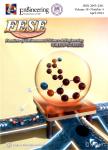Sustainable design of sanitation system based on material and value flow analysis for urban slum in Indonesia
Sustainable design of sanitation system based on material and value flow analysis for urban slum in Indonesia作者机构:Environmental Engineering and Science Hokkaido University Sapporo 060-8628 Japan Alliance for Research on North Africa University of Tsukuba Tsukuba 305-8572 Japan Research Centre for Physics Indonesian Institute of Sciences Bandung 40135 Indonesia Department of Environment and Technology Tokyo Institute of Technology Yokohama 226-8502 Japan
出 版 物:《Frontiers of Environmental Science & Engineering》 (环境科学与工程前沿(英文))
年 卷 期:2013年第7卷第1期
页 面:120-126页
核心收录:
学科分类:12[管理学] 1201[管理学-管理科学与工程(可授管理学、工学学位)] 08[工学]
基 金:supported by the Core Research for Evolutional Science and Technology of the Japan Science and Technology Agency (JST-CREST) the Science and Technology Research Partnership for Sustainable Development of the Japan Science and Technology Agency and Japan International Cooperation Agency (JST- JICA-SATREPS) the Science Research of the Grants-in-Aid for Scientific Research of Japan Society for the Promotion of Science
主 题:material flow value flow resource recycling system sustainable design initial cost urban slum
摘 要:Material flow analysis (MFA) and value flow analysis (VFA) were applied to the sanitation system in an urban slum in Indonesia. Based on the results of the MFA and VFA, garbage and excreta disposal costs were evaluated to be 0.7% and 1.1%, respectively, of per capita income. Such value flows seem reasonable in light of the recognized affordability to pay (ATP) standard. However, current excreta disposal methods create negative impacts on downstream populations. Because such disadvantages do not go back to disposers, but passed to downstream, the current value flow structure does not motivate individual toilet users to install treatment facility. Based on current material and value flow structures, a resource recycling sanitation system scenario was examined. Based on VFA, an affordable initial cost for such a system was calculated; this was found to be comparable in price to a cheaper composting toilet that is currently available in the market.



